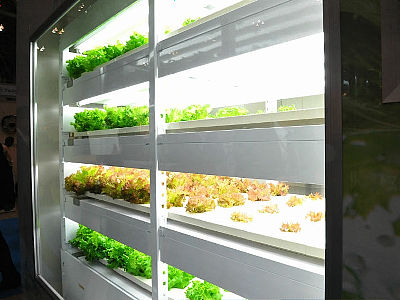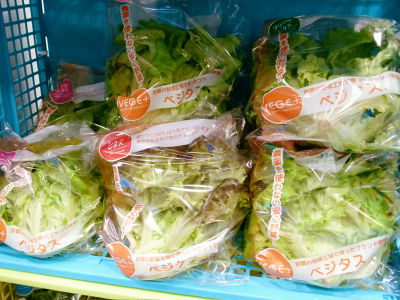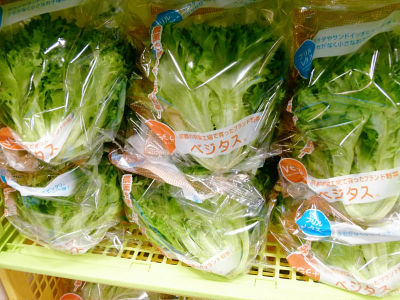Ultra mini size "Vegetable Factory" operating at 1,500 yen per day, vegetables completed in about 40 days

We can cultivate vegetables irrespective of the season and weather by artificially controlling hydroponics without using pesticides and light, temperature and humidity "Vegetable factoryActually, it is Japan that is running at the cutting edge of it, this time boasting the largest factory among them "Vegetas"But"FOODEX JAPAN 2011"We had a mini-mini vegetable factory that was not likely to be exhibited, so I tried interviewing what kind of thing it was.
Pesticide is zero, it can eat without washing, nutritional value is not low, it is mellow without melody, it is soft and easy to eat because it is completely sealed type "completely artificial light type" because there is no worry or bacterial worry Details of the "vegetable factory" that can make factory vegetables are as follows.
Vegetas
http://www.vege-tus.com/
"VEGE LAB" which originally made a huge vegetable factory small and compact

This is easy to understand, the image with the time axis flowing to the left in order from the right. It is about 40 days from the state of the seed to the state where the harvestable state at the left end is reached.

The lower space is like a tank of nutrient solution.

To do is basically just replacing this nutrient solution.

Since the entrance is equipped with an air shower and so on like a sterile room, it prevents bacterial invasion when entering the interior during replacement work.

Illumination uses fluorescent light, the reason why it is not LED is that illumination control is possible and cost.

It seems to be visible from the outside, so that they can be seen next to each other in the restaurant so that they can be seen from the customers, and that kind of little show window.

The state right after seeding. It will grow from here.

Scoop up.


This fluorescent light seems to be normal fluorescent light.

When it grows up this is completed. Because it is not affected by climate and weather, you can get stable quality vegetables.

Basically it is possible to raiseThis pageAs shown in Frill Lettuce, Mokoretta, Silk Lettuce, Pleated Lettuce etc.

In the case of ordinary farmland, the area of soil is limited, but in the case of vegetable factories it is possible to stack upward in this way, so its harvest isApproximately 100 times of open field cultivationIt is also said that.

The price which is worrisome is 10 million yen, and it seems that it was quite cheap because it seems that about a small mini size like this was about 40 million yen before. The running cost of the day is 1500 yen including all the controls such as lighting and temperature.

This is the management screen. In fact it is said that temperature and humidity are also displayed finely here in what is being used in a larger factory.

This is the vegetables made in this way.

There are smaller "Vegetus miniThere is also a full-breaded size called "one coin" with a price of only 100 yen. It is the first time in the history of factory vegetables that factory vegetables, which has been said to be overpriced than open vegetables, can be bought in one coin throughout the year, it seems quite epoch-making.

2011/03/01 22:13 Addendum
Although there are many kinds of lettuce at the moment,Description of official websiteaccording to,
Currently, various types of vegetables are cultivated in vegetable factories throughout Japan. Representative examples include leaves such as lettuce, tomatoes, strawberries, rice and the like. In the future, plant cultivation that can be utilized for flower cultivation and pharmaceutical preparation is expected.
The only kind of vegetables that can not be cultivated at the vegetable factory is root vegetables. In other words, vegetables grown under the soil are impossible in principle at vegetable factories where hydroponics is mainstream. In other words, the vegetable factory can grow in principle if it is a vegetable or a plant that grows on the soil, and on the day that we can grow most of the products we usually see in vegetable factories in the not too distant future It will come.
Vegetable factory technology that can ship freshly prepared vegetables is drawing attention from the world. In Russia where cold districts spread and in the Middle East where water resources are valuable, it is actually difficult to obtain fresh vegetables even if you are looking for them. Also in terms of safety without using pesticides, demand is expected in various regions. In the future, as production bases spread to the world, vegetables will be made to suit the specific needs of the area.
Therefore, other than root vegetables seems to be grown roughly.
Related Posts:







